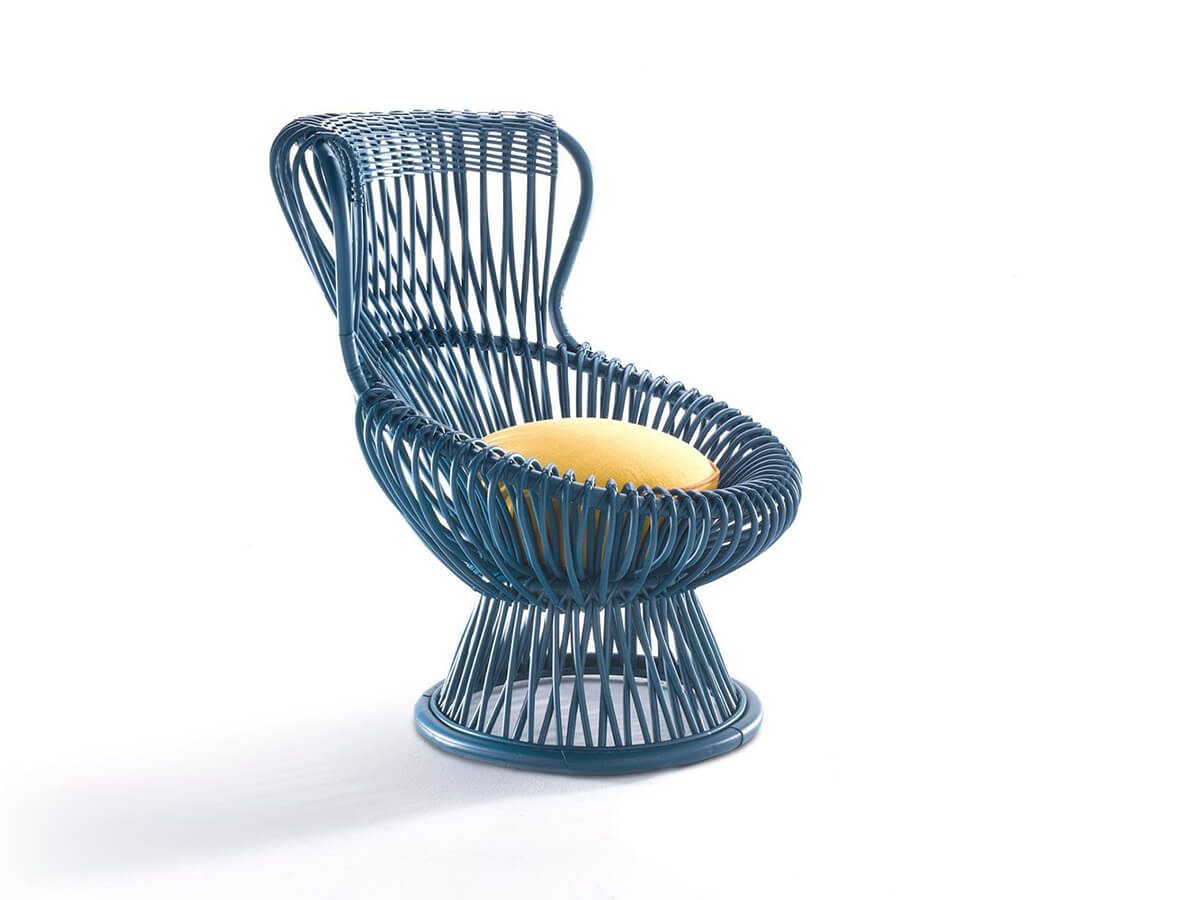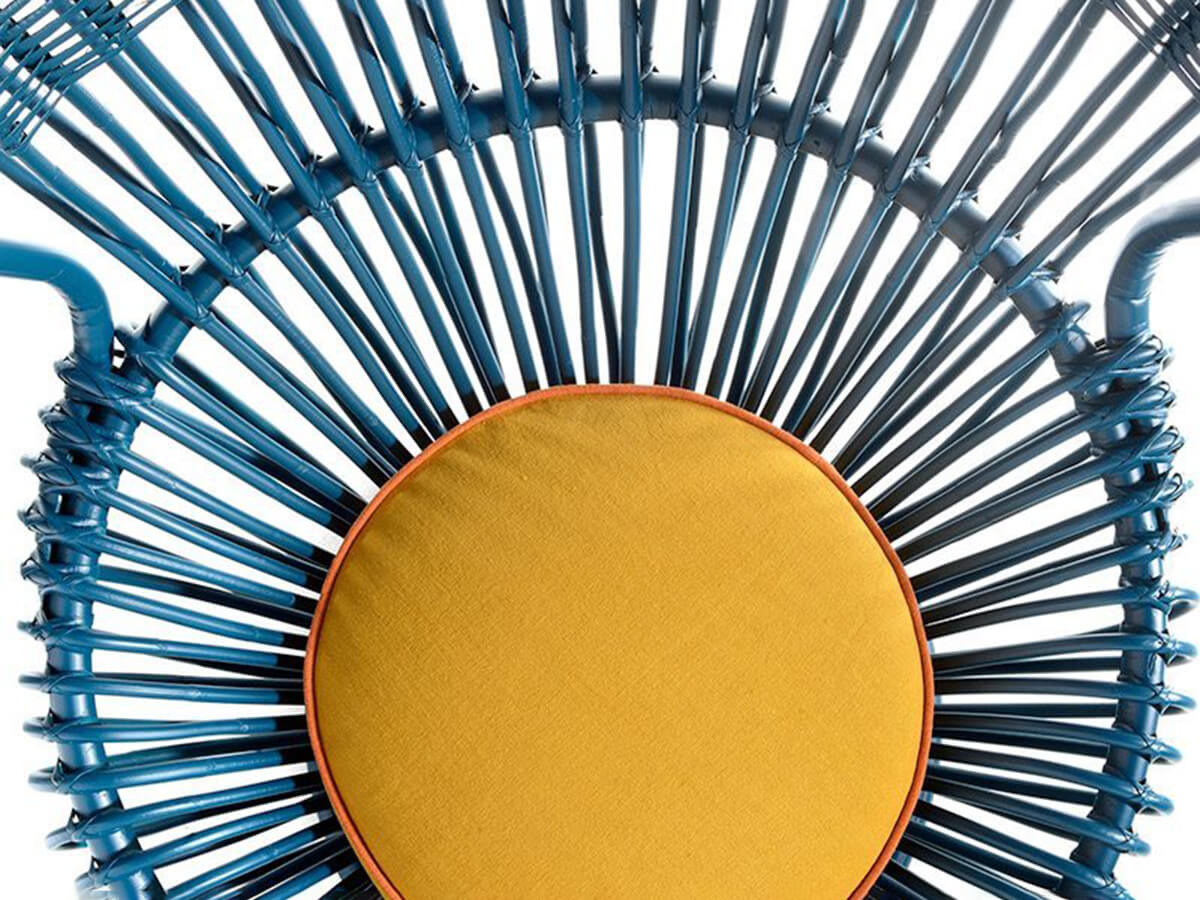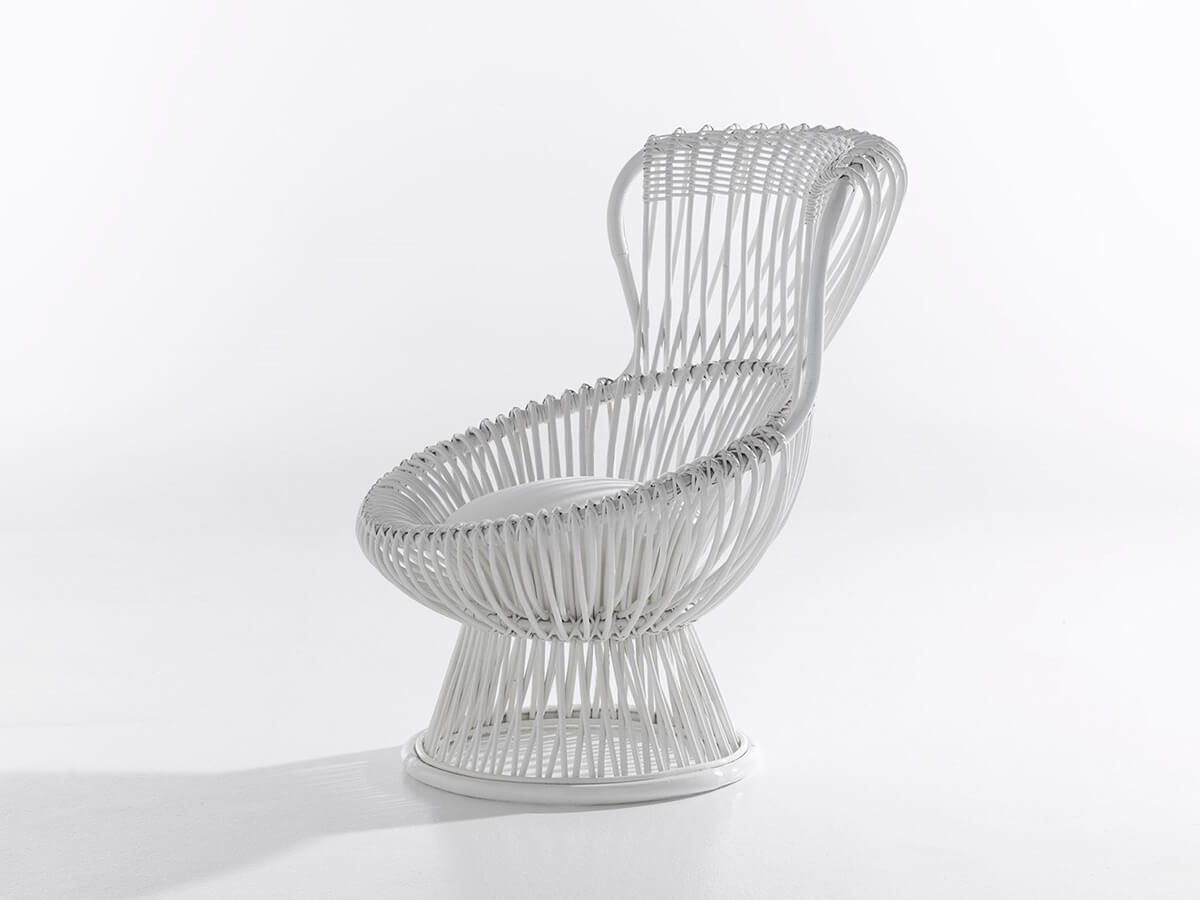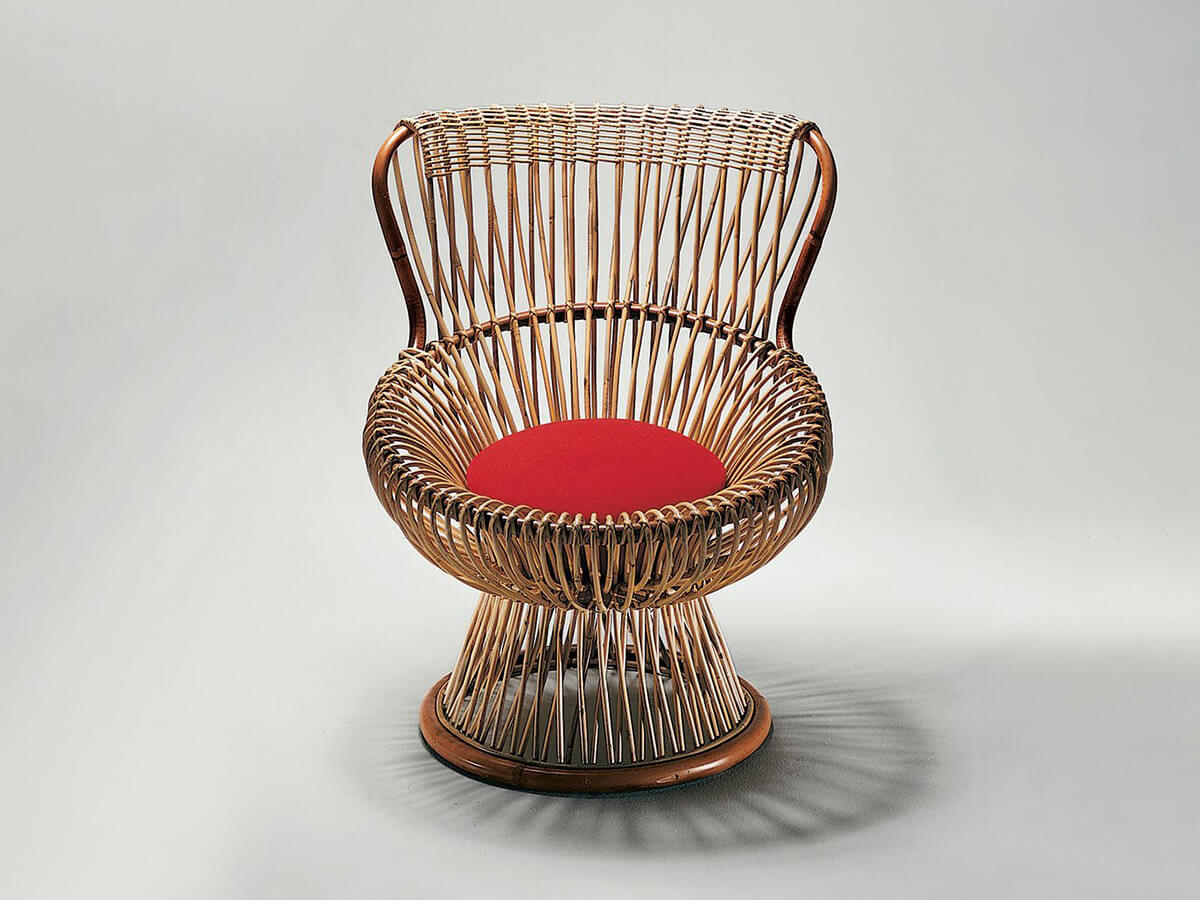Bonacina 1889
Margherita Armchair
Born from the creative genius of Franco Albini, Margherita is an armchair with a functionalist design, capable of transmitting the artisan tradition over time at the expense of fashions and passing trends. It is the first “legless” armchair of Italian design, a tribute to a notoriously poor material and to professions commonly considered popular, such as that of basket makers. Albini creates Margherita giving it an airy and highly evocative shape, creating a refined engineering device of a tensile structure to create the seat. The curvature of the Indian cane elements is designed in such a way as to give elastic support to the body by following its shapes. A design element that fits well in different environments, according to taste and needs. Technical features: seat cushion covered in fabric
W.80 x D.80 x H.96 cm
Seat Height 44 cm
Salvioni Design Solutions delivers all around the world. The assembly service is also available by our teams of specialized workers.
Each product is tailor-made for the personal taste and indications of the customer in a customized finish and that is why the production time may vary according to the chosen product.
To discover the full range of services available, visit our delivery page.
Personalize your request
Frame
Select
Select
Select
The Bonacina 1889 rattan furnitures are the result of over 100 years of experience of one of the most important sector dynasties, the Bonacina family from Lurago d'Erba. An artisan know-how handed down from generation to generation models the wise gestures necessary to work the reed, which is curved after being manually heated with the fire, or the wicker, which after being wet can be woven like a soft fabric. All this gives life to furnishings of great quality, with an ancient and exotic charm, enriched by the imagination of important designers who have chosen Bonacina 1889 to measure themselves with this suggestive material.Read more
Designed by
Franco Albini
Franco Albini (1905-1977) was one of the great masters of Italian Rationalism, both in the field of design and architecture. Since the 1930s he distinguished himself as one of the leading elements of the group of young architects who, gathered around the Casabella magazine, advocated the peculiar Italian interpretation of the Modern Movement and the Bauhaus that were forever changing European and world architecture, and which took the name of Rationalism in Italy. Putting functional values at the center, his creations did not try to hide the constructive elements, but rather emphasized them and put them in the foreground. After the war he began to collaborate with Franca Helg and intensified his theoretical and teaching activity, centered on the search for a synthesis between artisan tradition and industrial practice. As a designer he has worked with various realities such as Cassina, Arflex, Poggi and Bonacina; his creations are also re-edited by brands such as Knoll and Nemo. Among the major legacies of his work as an architect are the planning of Line 1 of the Milan Metro, in collaboration with Bob Noorda for the graphics, and the Rinascente building in Rome. Most of his post-war projects were co-signed with Franca Helg (1920-1989), who will carry on the activity of Studio Albini even after the death of its founder.Read more




